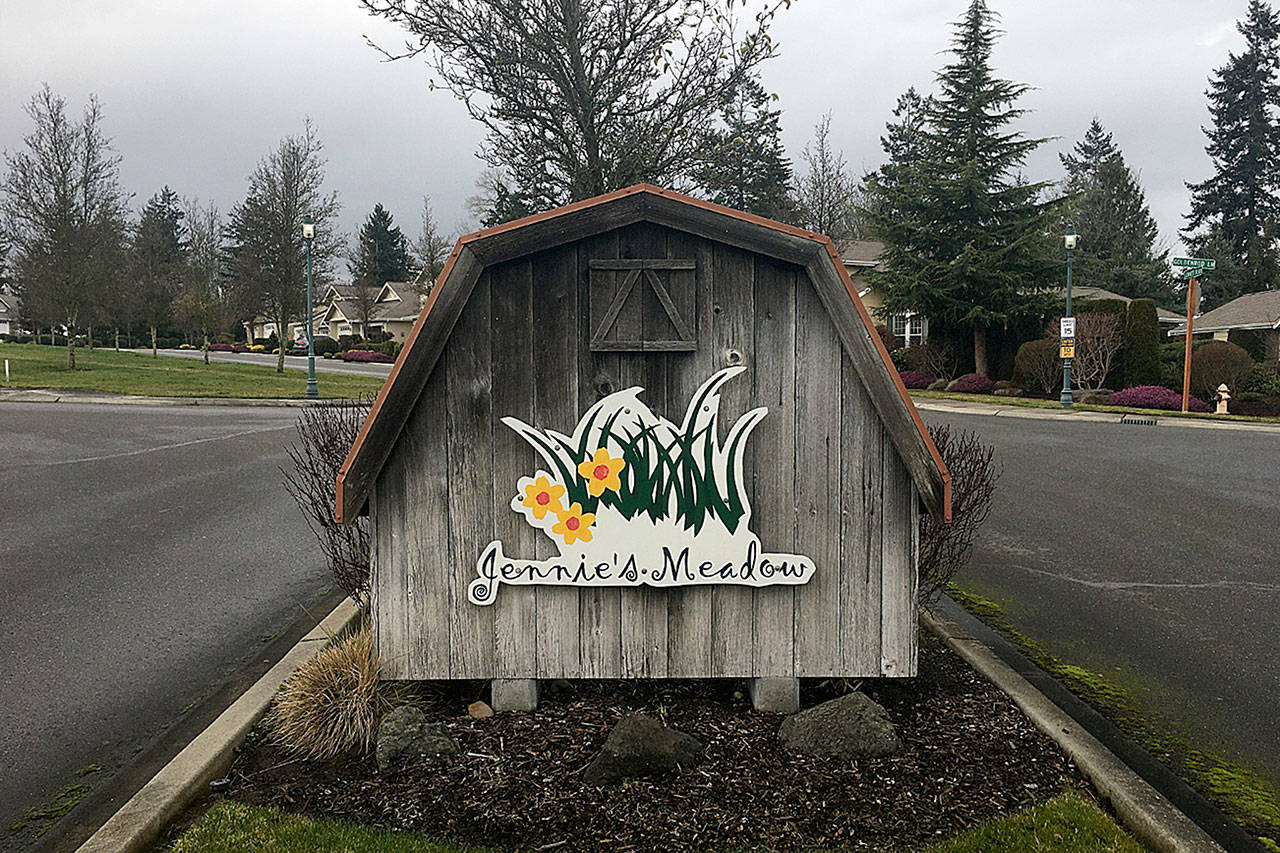A Clallam County Superior Court ruling keeps future phases of the Jennie’s Meadow subdivision at a standstill for the foreseeable future.
On Jan. 27, Judge Brent Basden upheld Sequim city council’s May 2019 decision to deny a variance request from developer Ruth Brothers Enterprise, LLC, of Kent, to use Jennie’s Boulevard off North Priest Road to access the subdivision’s proposed 71 homes for Phases B and C.
Councilors approved the two phases’ preliminary major subdivision on the west side of the Sequim city limits in 2019, but with conditions; among those conditions, the Ruth Brothers owners needed to prove their legal right to use Jennie’s Boulevard, and to develop a second ingress/egress for the development. The developer appealed this in June 2019, saying the decision lacked “substantial evidence” and that it violated the Ruth Brothers’ constitutional rights.
Basden wrote in his decision that Washington state’s land use law “provides a clear standard to be applied by the city council in considering the appropriateness of a variance request.”
He wrote, “There is substantial evidence under RCW 36.70C.130(I) that supports the city’s denial of the requested variance. As such, it is also the case that the denial was not arbitrary and capricious.”
Basden reiterated the city’s 2018 municipal code, that reads, in part: “Each subdivision must have at least two points of access, except for those minor subdivisions or sort plats with four or fewer lots.”
The Jennie’s Meadow Phase A Homeowner’s Association (JMHA) also opposed the variance request because the organization felt a second entry and exit point was required under current city code.
City municipal code 17.32.110 states that subdivisions between four and 30 lots must have at least two points of access if separated by a minimum 10-foot-wide landscape area and encompass two, 20-foot-wide drive lanes.
Jennie’s Meadow residents testified before city council in 2019 that if construction was allowed, equipment would use Jennie’s Boulevard as its main entry and exit point and travel down the hill and through a roundabout without a second entrance.
Fred Inman, chair for Jennie’s Meadow’s board of directors, said the developer didn’t have the right to use the road for development, and needed to demonstrate its right to use the road.
“We’re pleased the court supported the city’s decision,” Inman said.
When asked for comment, city attorney Kristina Nelson-Gross shared a similar sentiment: “We’re pleased the court upheld the council’s decision.”
Attorney Craig Miller for Ruth Brothers stated many reasons for the land use appeal, stating the variance request was based on the wrong requirements (subdivision rather than zoning ordinance), and that the city’s code does not require two entrances/exits in 2005 when Phase A was approved by city council.
For this story, Miller had no comment on Basden’s decision or if Ruth Brothers’ owners sought a follow-up action to the ruling.
At a Jan. 11 hearing, Miller said the city’s ordinance “is a bit of a mess” and that since Phase A was approved, the ordinance has been amended many times and the variance request was not heard by a hearing examiner as originally instructed to do.
Miller said Nelson-Gross was “making up all kinds of new conditions” and alleged that there’s no language saying Jennie’s Boulevard cannot be used as an access.
He added that because developers aren’t dealing with public streets they must acquire rights for access, and “it’s not easy to go to acquire an easement.”
In 2019, Scott Headrick, an engineer on the project working with Zenovic & Associates, Inc., presented that Ruth Brothers’ owners explored other entrance options but neighboring homeowners didn’t want to connect to the city, or the developers’ options were too costly.
Colette Kostelec, attorney for the homeowners association, said at the Jan. 11 hearing that the developer and their representatives never say “a secondary access is impossible” and homeowners interpreted it as a “dollar incentive thing.”
“The applicant needs to show the city there is no other alternative,” Kostelec said.
She added, “It’s important to have a second access point for construction (because) you don’t want construction vehicles going down Jennie’s Boulevard; that’s going to be a nightmare.”
With 89 homes in Phase A, including single-family homes in the lower portion and town homes in the upper portion of the development, Basden asked if it would be in violation of city code with one way in and out if before the city now.
Nelson-Gross said she didn’t work with the city in 2005 so she didn’t know the circumstances behind Phase A’s approval, but “if that subdivision was presented today, we would not allow it.”



